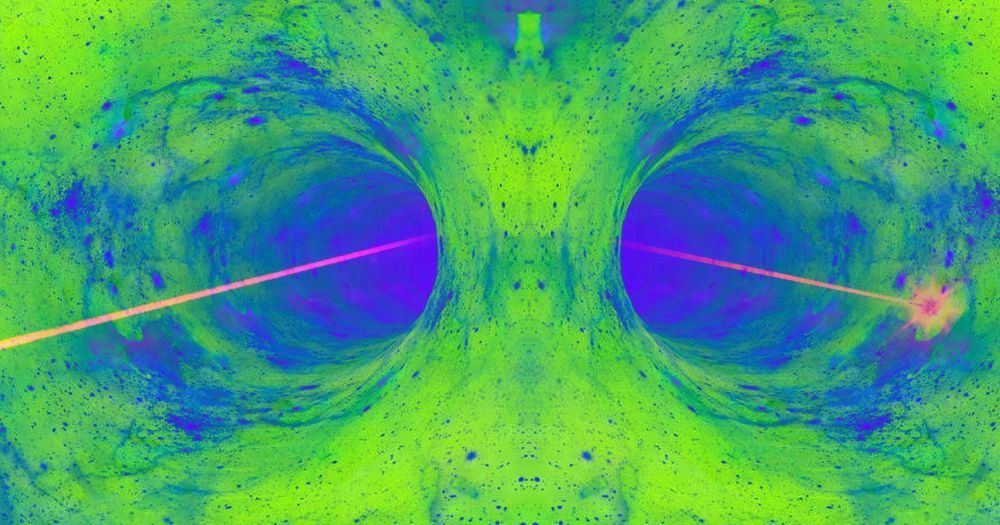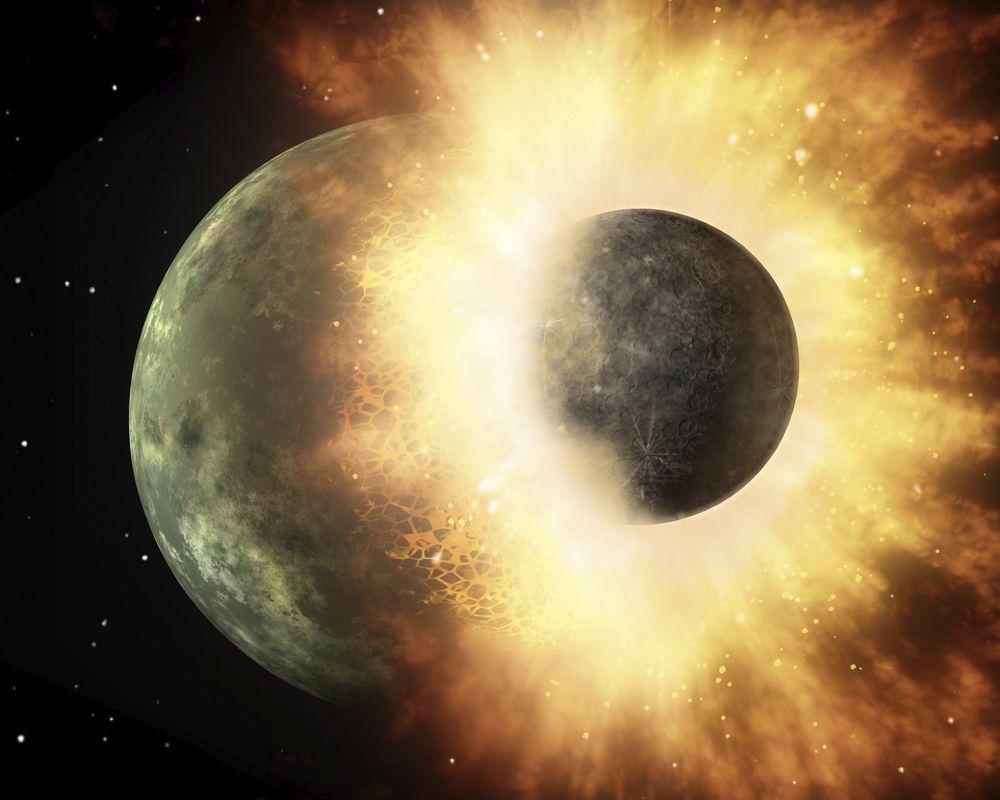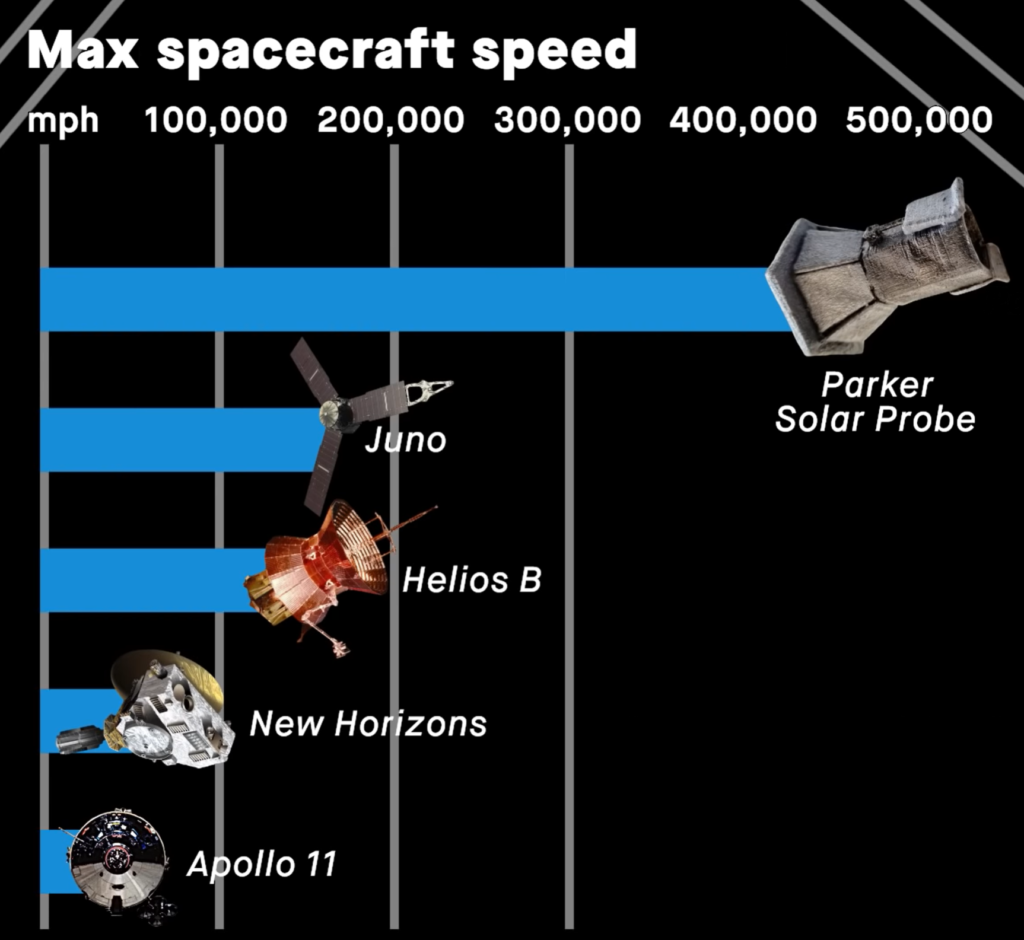An international team of scientists has created the most detailed large-scale model of the universe to date, a simulation they call TNG50.



https://www.nasa.gov/press-release/goddard/2019/sugars-in-meteorites
An international team has found sugars essential to life in meteorites. The new discovery adds to the growing list of biologically important compounds that have been found in meteorites, supporting the hypothesis that chemical reactions in asteroids—the parent bodies of many meteorites—can make some of life’s ingredients. If correct, meteorite bombardment on ancient Earth may have assisted the origin of life with a supply of life’s building blocks.
The team discovered ribose and other bio-essential sugars including arabinose and xylose in two different meteorites that are rich in carbon, NWA 801 (type CR2) and Murchison (type CM2). Ribose is a crucial component of RNA (ribonucleic acid). In much of modern life, RNA serves as a messenger molecule, copying genetic instructions from the DNA molecule (deoxyribonucleic acid) and delivering them to molecular factories within the cell called ribosomes that read the RNA to build specific proteins needed to carry out life processes.

New “space as a service” initiatives are evolving. As a result of WeWork pulling its IPO, I expect you will see renegotiated leases and direct competition across the globe, with a $3 billion fund to start. Real estate development is moving in two directions — technology and experience — but firms need to figure out what that means for them, and how to spend their money.
Delete Technology, Add Humans
Many smart city projects have not met their goals. IoT may make some efficiency gains, but it doesn’t automatically improve quality of life or reduce complexity. City planners and real estate developers need to take a longer view and understand that ROI is directly tied to the GDP of the area.


On November 2, 12 bottles of Bordeaux wine were launched to the International Space Station (ISS). These bottles are not intended for holiday celebrations by the crew, however (consumption of alcohol is officially prohibited in space.) Instead. the bottles are part of an experiment conducted by the University of Bordeaux’s Institute of Vine and Wine Science (ISVV) and a company called Space Cargo Unlimited to investigate if the aging process of wine is affected by microgravity conditions.
As novel as this experiment sounds, the Bordeaux team is not the first group to examine how alcoholic beverages age in space. That distinction is held by two whisky producers, one in Scotland, the other in Japan. In 2011, Scotch whisky producer Ardbeg partnered with Nanoracks to launch the first whisky aging experiment in orbit. When the samples were returned to Earth in 2014, a clear difference was readily apparent from the control samples that remained on Earth—and not for the better. According to an Ardbeg white paper, the aftertaste was “pungent, intense and long, with hints of wood, antiseptic lozenges and rubbery smoke.” However, Ardbeg was not certain if this was a result of the aging process or other extreme factors that the samples encountered.
In 2015, Japanese whisky producer Suntory also launched whisky samples to be aged on the ISS. One batch of these samples returned to Earth for analysis after a year in orbit, but another batch still remains on the station. Thus far, Suntory has not released any data from these experiments.

Will they be singing this “up there” in a few years? smile
An original song performed live by EMYLE 11/18/19
Voice-EMYLE
Guitar-EMYLE
www.iamemyle.com
Lyrics & melody by Emily Stein 2019.

China has completed its first public test of a Mars lander, keeping the country on track for an unmanned exploration mission to the red planet in 2020.
The trial took place Thursday in the mountainous landscape of Hebei province, about an hour and a half drive north of Beijing. Chinese officials said the landscape mirrored the slopes and craters of the planet Mars.

The prestigious academic physics journal Physical Review Letters published a paper this week about cutting-edge laser tech — and, if bloggers are to be believed, it could have juicy ramifications.
The paper itself is dry and technical, but the prominent tech blog Ars Technica’s interpretation of its findings is anything but. According to Ars, in fact, the tech it describes could pulse a laser “through fabric of the Universe.”

From remote measurements of the Moon’s mass and radius, researchers also know its density is anomalously low, indicating it lacks iron. While about 30 percent of Earth’s mass is trapped in its iron-rich core, the Moon’s core accounts for only a few percent of its total mass. Despite this substantial difference in iron, Apollo samples later revealed that mantle rocks from the Moon and Earth have remarkably similar concentrations of oxygen.
And because these lunar and terrestrial rocks differ significantly from meteorites originating from Mars or the asteroid belt, it shows the Moon and Earth’s mantle share a past connection. Additionally, compared with Earth, lunar rocks are more depleted in so-called volatile elements — those that vaporize easily upon heating — which hints that the Moon formed at high temperatures.
Finally, researchers know that tidal interactions forced the Moon to spiral outward over time, which in turn caused Earth to spin more slowly. This implies the Moon formed much closer to Earth than it is now. Precise measurements of the Moon’s position using surface reflectors placed during the Apollo program subsequently confirmed this, verifying the Moon’s orbit expands by about 1.5 inches (3.8 centimeters) each year.

Earlier today, Genevieve O’Hagan updated Lifeboat readers on this week’s momentous event in Astronomy. At least, I find it fascinating—and so, I wish to add perspective…
30 years ago, astronomer Jack Hills demonstrated the math behind what has become known as the “Hills Mechanism”. Until this week, the event that he described had never been observed.* But his peer astronomers agreed that the physics and math should make it possible…
Hills explained that under these conditions, a star might be accelerated to incredible speeds — and might be even flung out of its galaxy:
If conditions are right, one star ends up orbiting the back hole while the other is jettisoned at incredible speed, yet holding onto its mass and shape. All that energy comes from the gravity of the black hole and the former momentum of the captured star. [20 sec animation] [continue below]

This week, astronomers found clear evidence of this amazing event and traced it back to our galactic center: Five million years ago — as our ancestors learned to walk upright — a star that passed close to the massive black hole at The Milky Way center was flung away at a staggering 6 million Kmh. It is traveling so fast, that it is no longer bound to our galaxy or galactic cluster. It is headed out of the galaxy.
* Prior to this week, astronomers have observed a few stars traveling inexplicably at incredible speeds. But this is the first time, that they have traced the trajectory back to a black hole and the conditions described by Jack Hills.
Reference: